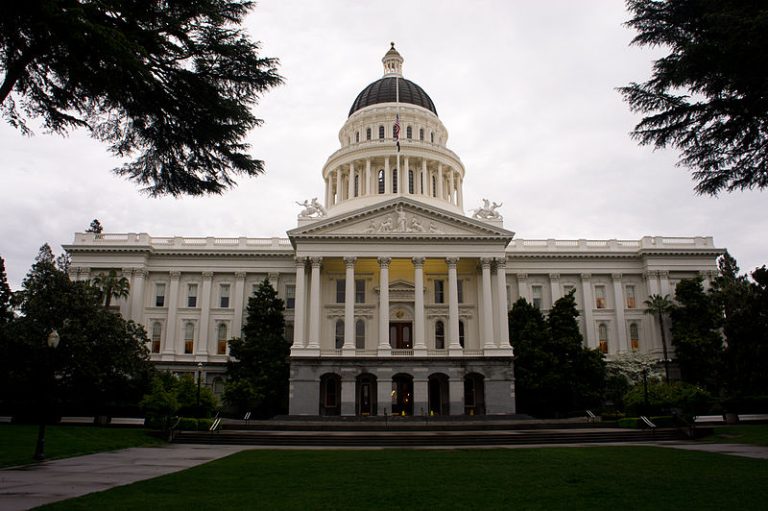Imagine walking through the grandeur of the California State Capitol Museum, where the sunlight dances off the Corinthian columns and the intricate ironwork whispers tales from a bygone era. As you explore this architectural marvel at 1315 10th St, Sacramento, CA 95814, you’ll uncover the rich tapestry of California’s history and its legislative process. But there’s a lot more to discover here, from the Native Californian tribes to the Gold Rush era and the Civil Rights activism. So, what else do you think lies within these hallowed walls?
Exploring the Museum’s Architecture
Dive into the intricate details of the California State Capitol Museum’s architecture, a remarkable blend of Neoclassical and Victorian styles, that stands as a testament to the state’s rich historical and artistic legacy. As you approach, you’re immediately struck by the imposing Corinthian columns, a hallmark of the Neoclassical style. They aren’t just decorative, they hold the weight of the entire structure, symbolizing the strength of California’s democratic principles.
Move deeper into the building and you’ll notice the Victorian influences. Pay close attention to the ornate ironwork and intricate wood carvings adorning the staircases and ceilings. They’re not just aesthetic elements; they’re imbued with symbolism, reflecting the optimism and grandeur of the Victorian era.
The museum’s architecture is an embodiment of freedom. The open floor plan, large windows, and high ceilings create an atmosphere of openness and transparency. It’s a physical expression of California’s commitment to openness and inclusivity.
Historical Exhibits Overview
As you venture beyond the architectural grandeur of the museum, you’ll encounter a range of historical exhibits that vividly present California’s rich and complex past. Spanning eras from the indigenous period to the modern epoch, these exhibits will transport you through time in an engaging, immersive experience.
In the Native Californian exhibit, you’ll learn about the indigenous tribes that first inhabited the region, their cultures, practices, and their relationship with the land. The Spanish Missions exhibit takes you deeper into the colonial period, highlighting the impact of Spanish colonizers on indigenous societies. There’s an exhibit dedicated to the Gold Rush era, too. Here, you’ll gain insights into the socio-economic transformations catalyzed by this monumental event.
The museum’s displays on the statehood and development era shed light on the pivotal moments leading to California’s admission into the Union and its subsequent growth. The Civil Rights exhibit is particularly poignant, emphasizing the struggles and victories of Californian civil rights activists.
In essence, the California State Capitol Museum’s historical exhibits offer you an enriching journey through the state’s multifaceted history. They provide an opportunity to understand how California’s past has shaped its present, all while encouraging you to ponder the future possibilities.
Understanding California’s Legislative Process
Continuing your journey through the museum, you’ll gain an intricate understanding of California’s legislative process, shedding light on the mechanics of law-making in the Golden State. You’ll discover how the bicameral system, consisting of the State Assembly and Senate, collaboratively drafts, debates, and amends legislation.
Witness the meticulous crafting of bills, each one a potential law, and learn about the rigorous committee review that scrutinizes every proposal’s impact, feasibility, and constitutionality. You’ll find that the democratic process here is robust, promoting a free exchange of ideas and perspectives.
Delving deeper, you’ll explore how the Governor’s role as the executive power intersects with the legislative process. The Governor’s ability to sign bills into law, or to veto them, serves as a balancing act, ensuring that the power isn’t concentrated in a single branch. This separation of powers is fundamental to the preservation of freedom in California.
Visitor Information and Tips
Before planning your visit to the California State Capitol Museum, it’s essential to take note of a few practical tips to enhance your experience. First, consider the museum’s operating hours. It’s open from 9 a.m. to 5 p.m., seven days a week, except for major holidays. Timing your visit during the less busy morning hours can provide a more relaxed and individualized experience.
Reserve a guided tour in advance, especially if you’re part of a larger group. These tours delve into the rich history of the museum and its significance in California’s legislative process, providing you with a deep and insightful understanding.
Parking can be a consideration as well. There are metered parking spaces available around the museum, but they fill up quickly. Public transportation or ride-sharing services may be a more convenient option.
Finally, remember that security measures are in place for your safety. Expect to go through a security check upon entering the museum. Don’t forget to check the museum’s policy on items like backpacks and food, to ensure you’re not inconvenienced upon arrival.
Being prepared can greatly enhance your museum visit, giving you the freedom to focus on the historical and cultural enlightenment that awaits.
Browse next article: Sacramento Zoo, CA

